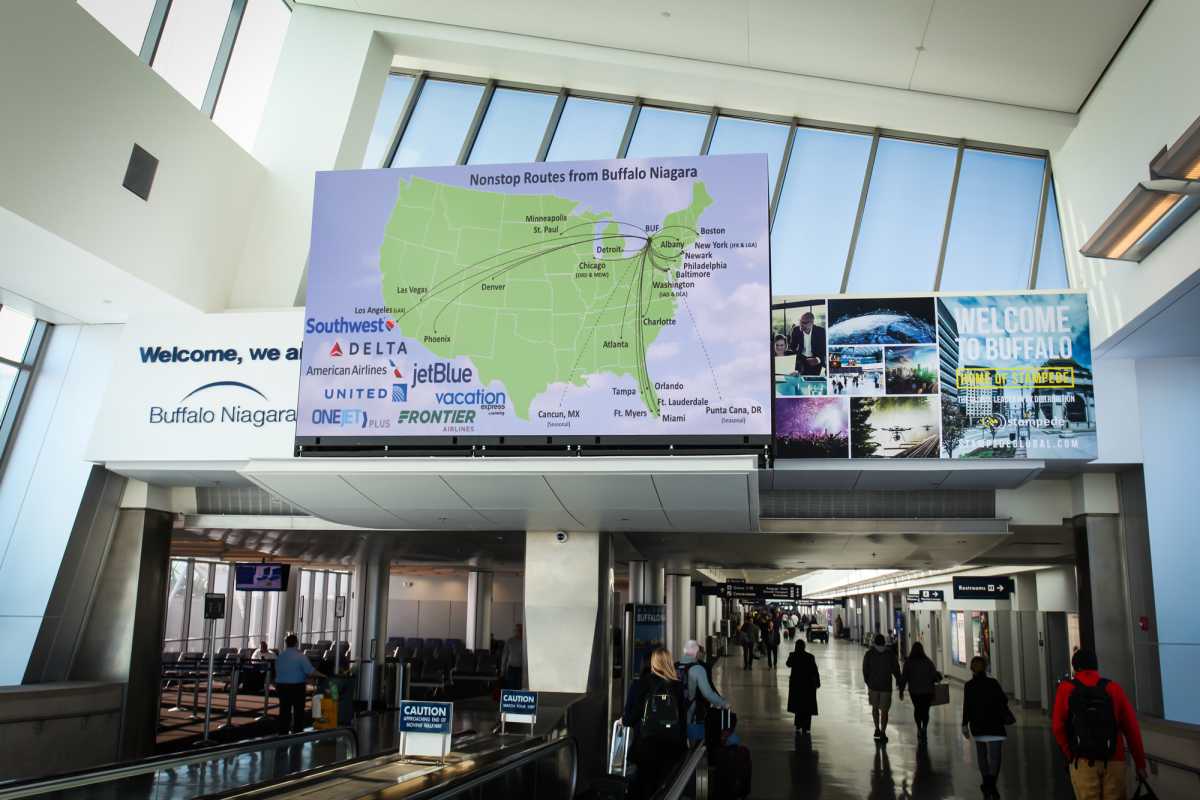Direct-view LED installation video wall projects make up a significant percentage of most integrators’ total business. Some would even say that digital signage technology is the most prominent category in the pro AV industry. So the stakes are high for technicians to get it right the first time, lest the reputation of their firms suffer.
Electricians and architects would be ill-fitted to install these often–complicated designs. It takes an integration firm with experience and training to get these direct-view LED displays working.
But maybe you’re a technician at the start of your career; or maybe you’re just more experienced in LCD or projection and want to expand your skill set to dvLED.
Whatever your motivation or experience level, these direct-view led installation tips should help. Read them before you go out on your next video wall job.
First things first: this is not LCD!
Jonthan Brawn, Principal at Brawn Consulting, says many installers who have not worked with dvLED before treat it like an LCD video wall, which is definitely a bad idea.
“The tolerances are tighter (depending on pixel pitch) and the edges are far more delicate,” he says.
Related: The State of Video Walls and Digital Signage Technology Trends
“This means it’s considerably easier to damage the cabinets, and can be really hard to get the cabinets lined up; small errors that might not be a big deal in an LCD videowall can be major challenges with dvLED.”
Direct-view LED installations are a white glove affair
Installers should always have a pair or two of white gloves with which to handle LED modules.
“Don’t forget that unlike most other technologies, when installing a dvLED you are physically coming into direct contact with the core technology without a protective layer. Greasy hands are a bid thing!” Brawn says.
Power conditioning is a must
Both Jonathan and his father, Alan Brawn agree: power conditioning and an appropriate number of outlets in general is something many integrators miss.
Choosing the right dvLED technology
“In the same way that the moment you think of a product you may need, somehow you get ads for it on every site — this is how dvLED manufacturers work,” says Lionel Felix, CEO of Felix Media Solutions, a firm that specializes in dvLED projects.
“You will be inundated by people selling walls. What’s an integrator to do?! It is important to make sure you have a checklist when interviewing a manufacturer.”
Remember: just because it’s a brand name you don’t recognize doesn’t mean it isn’t legitimate.
“I didn’t realize how many of the products in dvLED were quite popular in other regions. Doing the due diligence and asking your friends in other AV markets what they see, who they like, and why, is good,” Felix says. “Look at their websites, see if they have offices in the US, call the support number, ask if they have full-time staff here. Ask if they repair in the US.”
Look for solutions which feature:
- edge protectors that are used during install (the most dangerous time for edge LEDs)
- edge guards for the whole “bezel” so they are not bumped
- bonds where the sub panels look like a single sheet of LEDs and are submerged in the panel and the face is smooth
- hot-swappable subpanels
Get your resolutions straight
“HD, 1080P, 4K and UHD are often taken for granted and no one is counting pixels and suddenly a round logo is a little oblong and the client loses their mind,” Felix warns.
A wall design should accurately reflect the exact, specific, counted and double-checked aspect ratio and resolution that content will be provided in. Often, content creation is made by an agency, so Felix advises you to talk to them directly to find out what their output will be, resolution, frame rate, aspect ratio and delivery method (USB stick, media player, cable tv, a PC, etc.).
If it is not quite right, you may need to overscan or scale. Overscanning will clip video off the top/bottom or sides. Scaling will absolutely change the aspect ratio and push pixels around.
Measure ten times, mount once
Walls are rarely straight and often have a variance of 1/4″ to 3/4″ — but an LED wall requires a surface with less than 1/8″ of variation.
Spare parts & a backup plan
A direct-view LED installation isn’t complete until there are spare parts filed and labelled, as well as an easy-to-parse backup plan in place. This plan could entail some information distributed to the client, or it could be filed under a service agreement – either way, you should have one!
Related: Comparing AV over IP: NONE of These is Just Like the Other
Spare parts should be available during and after the installation.
“Most vendors recommend them, a lot of dealers say no, since it’s under warranty,” Jonathan Brawn says. “This can be a big delay in getting the project up and running if you have any accidents or failures.”
Helpful direct-view LED displays terms & definitions
Here’s what to make of the most common direct-view LED installation terminology, courtesy of Lionel Felix:
- Panel Frame or Chassis – The individual frame of one panel. Often machined aluminum. It will house a power supply (or two), a video card (or more) internal cabling for the LED Sub Panels.
- Sub Panel – Each LED panel is often 500mm x 500mm or 27.5″ diagonal. Each panel is made of multiple individual arrays of LEDs. A panel may have 6 or 8 sub panels. They can be removed from the front or rear depending on your need. Why 27.5″ Diagonal? It is 16×9 and 4 make a perfect 55″ frameless TV.
- Controller – The unit that takes the video input (SDI, HDMI, DVI, VGA, etc) and then sends it to a built wall.










